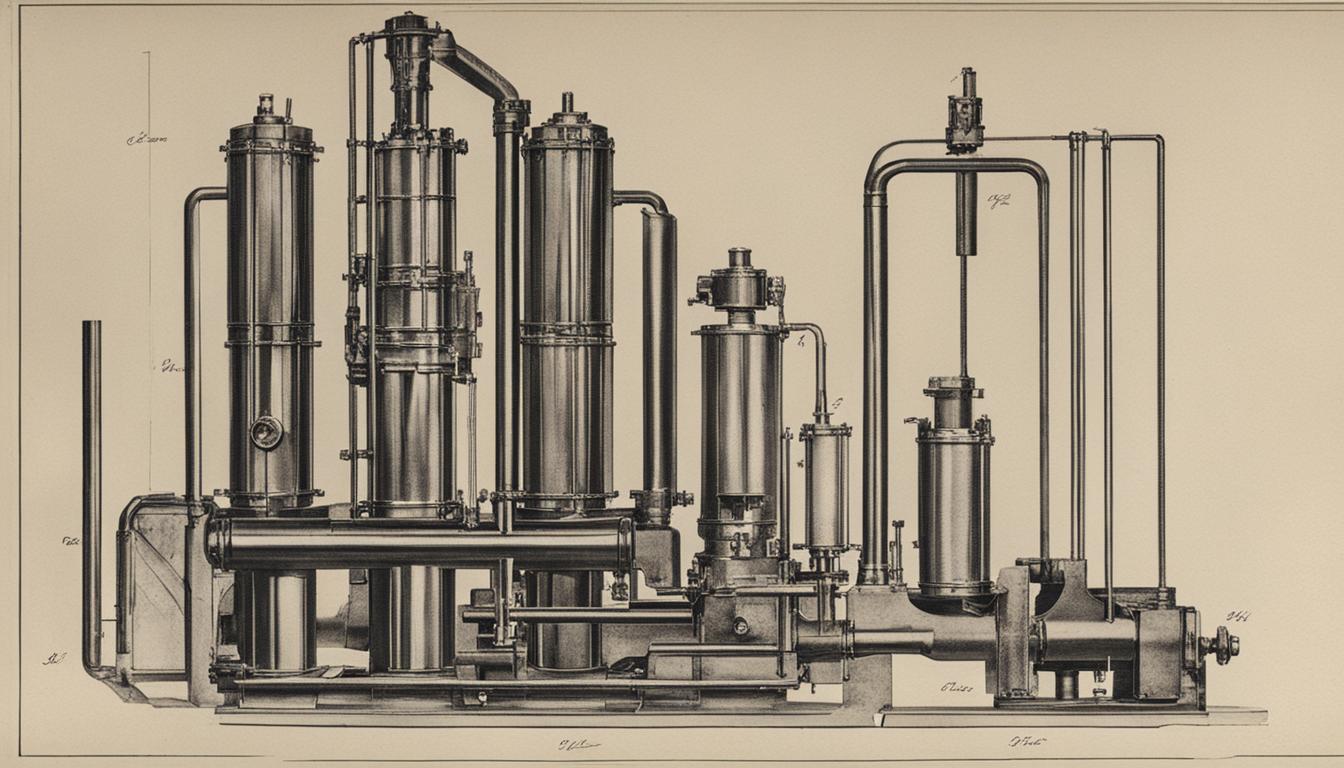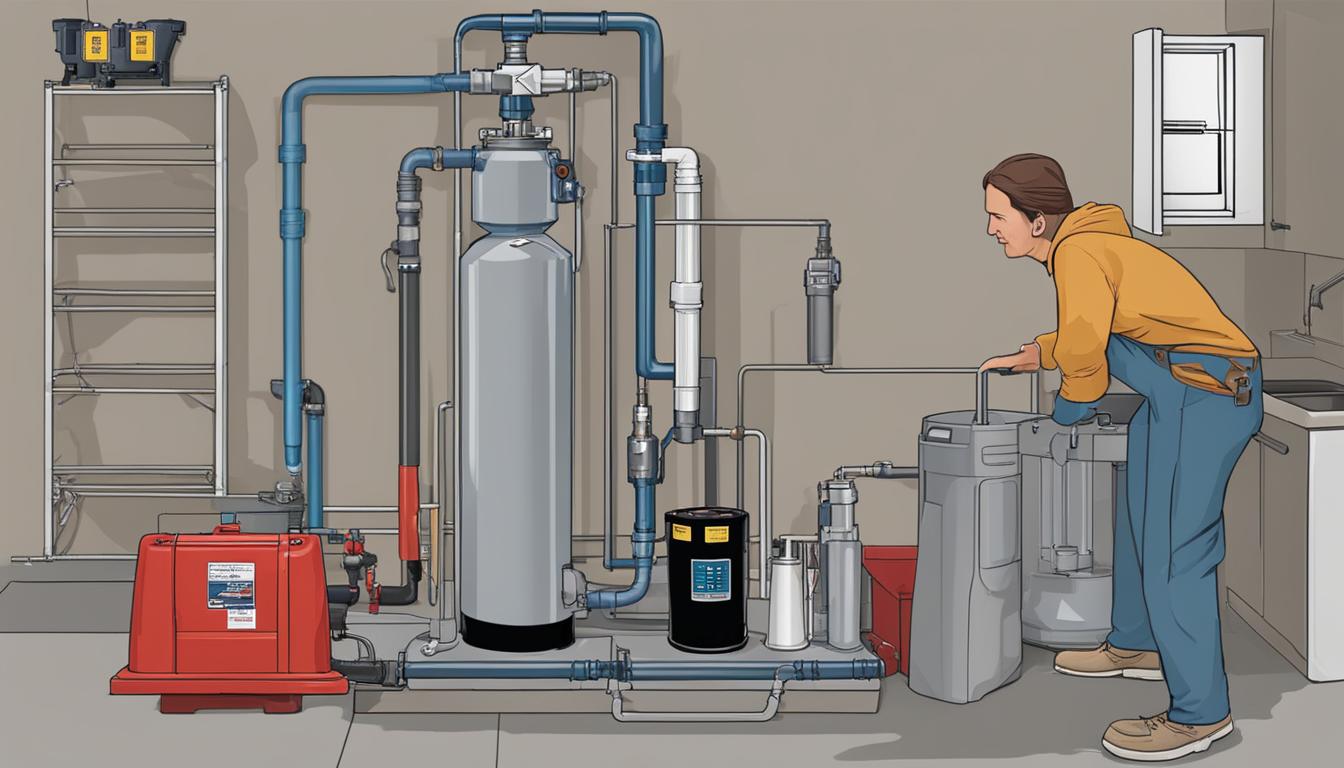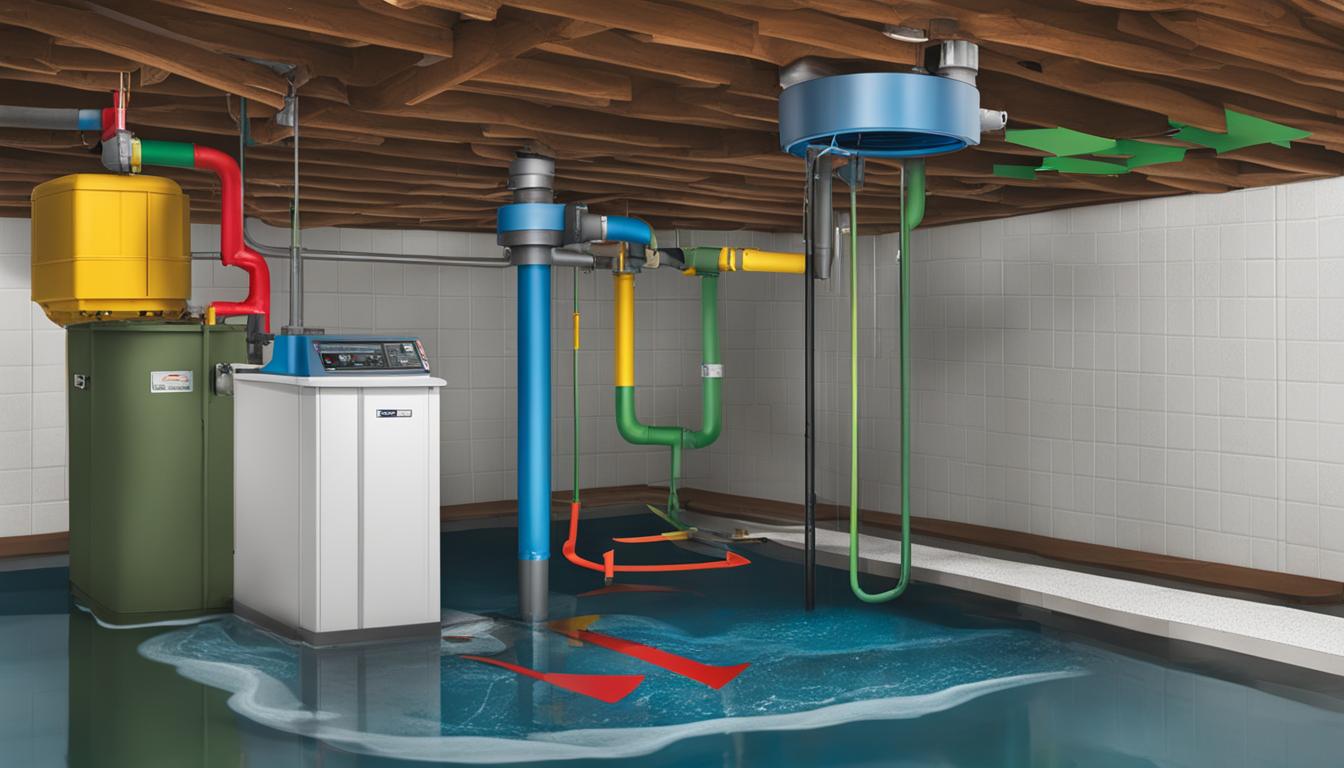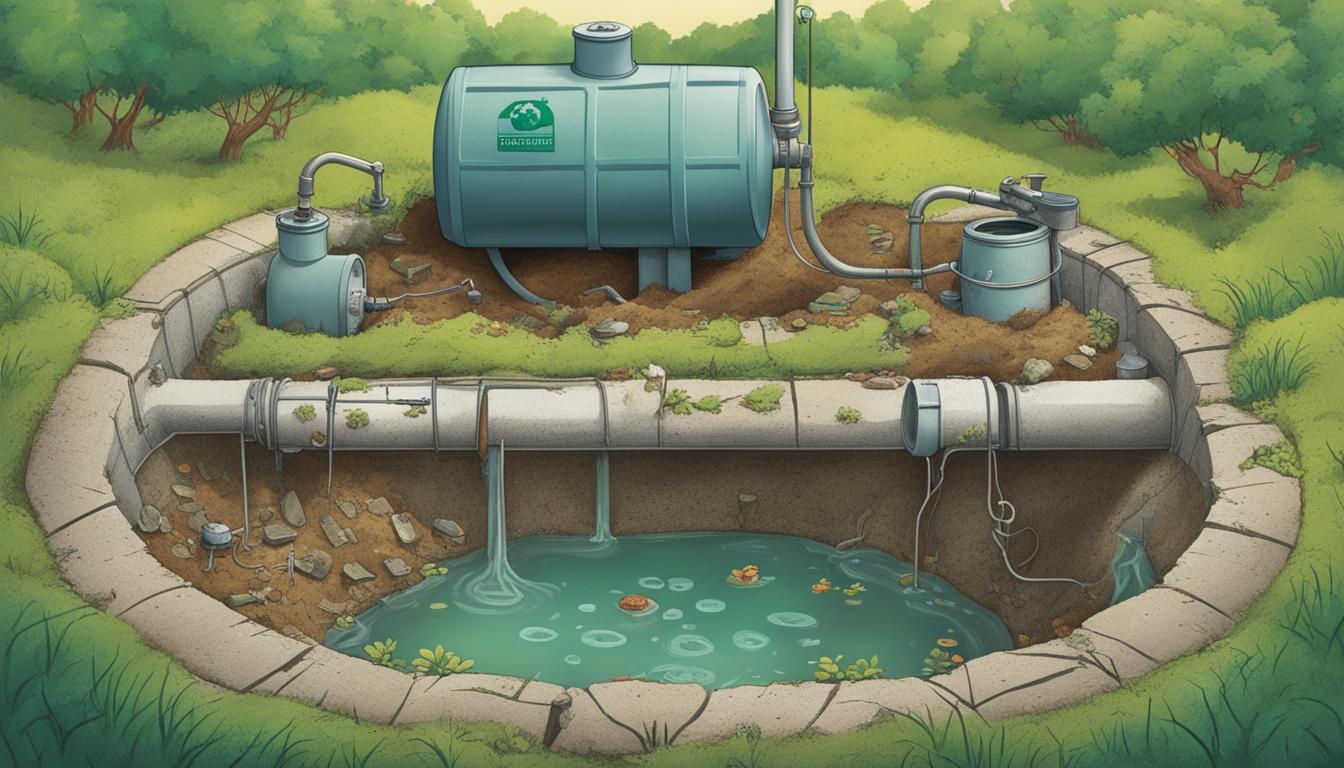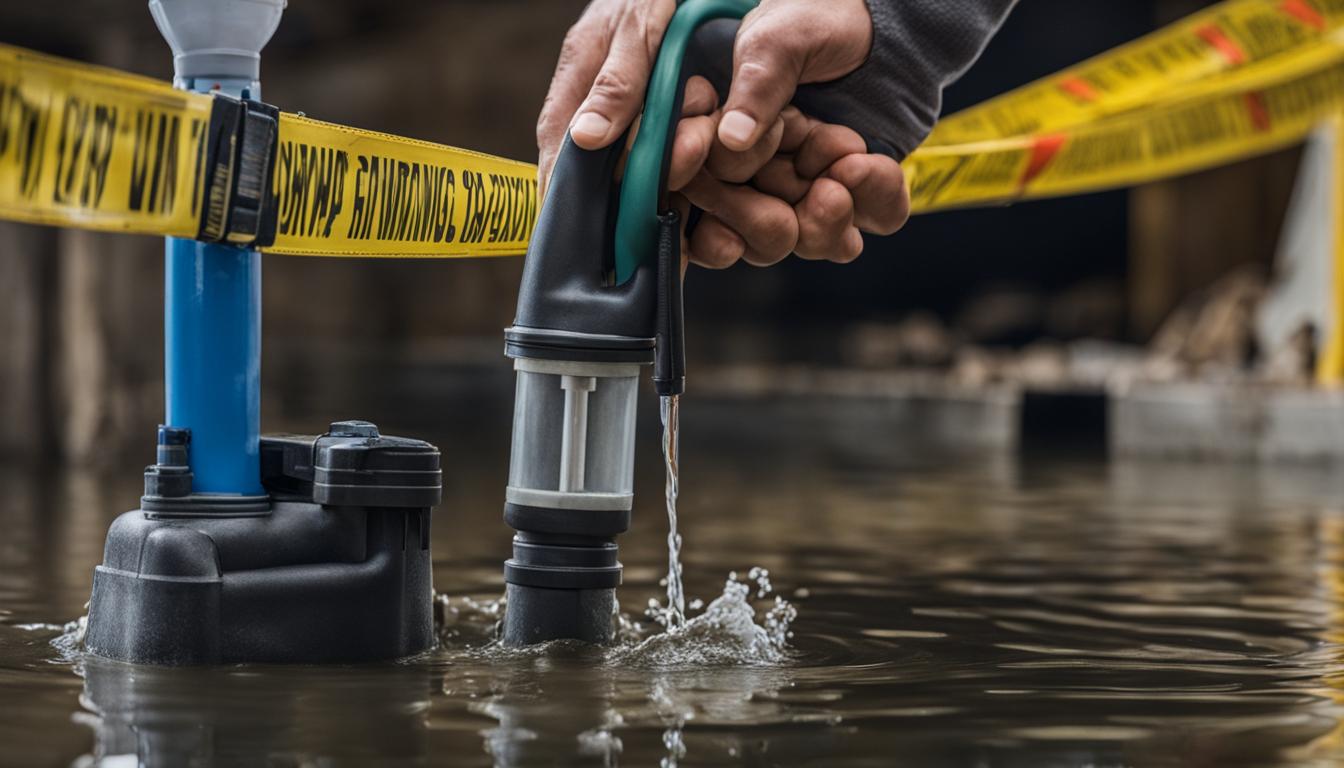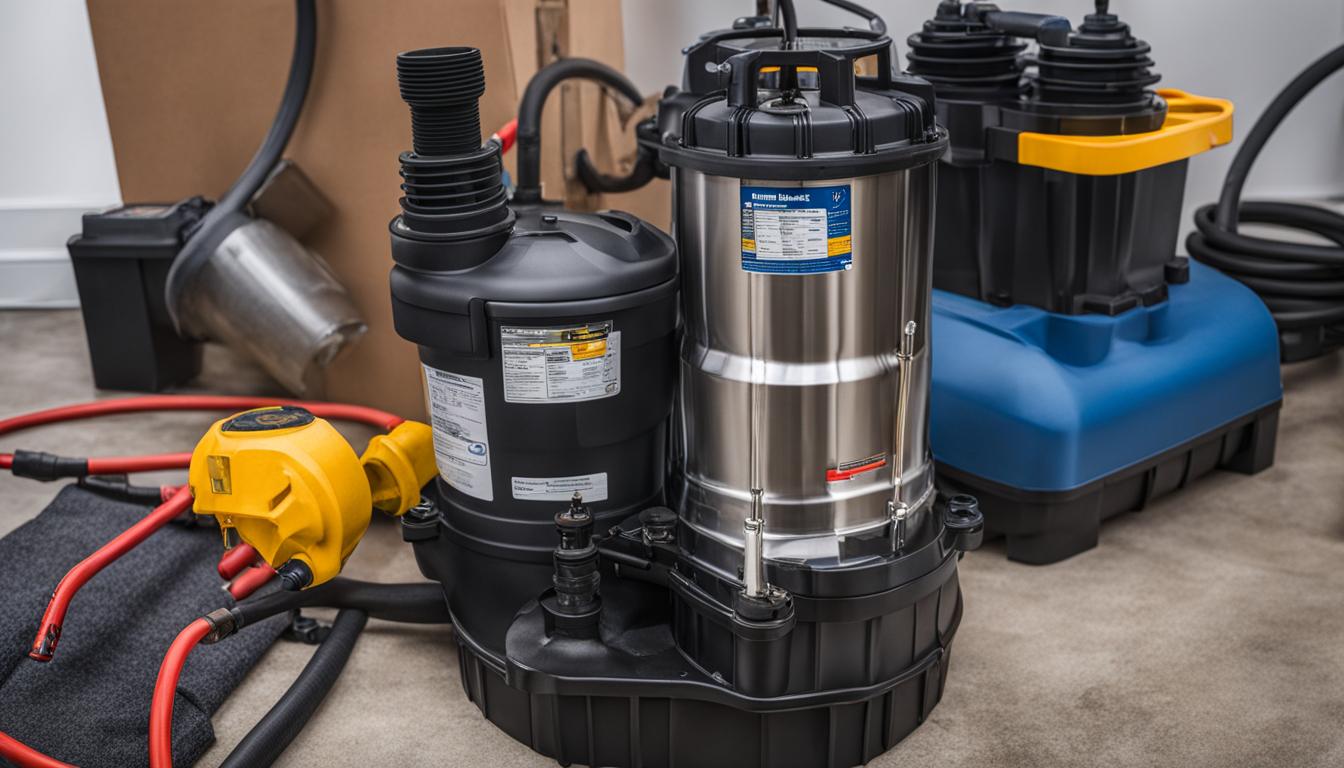In this article, we will take a look at the fascinating progression of sump pump design, from its humble beginnings as a basic concept to the advanced adaptations we see today. Sump pumps have undergone significant changes, and we’ll explore the historical development, modern innovations, and efficiency gains that have made these devices integral to our basements.
The need to prevent flooding and water damage led to the birth of sump pumps. From manual systems to basic mechanical pumps, the early concepts of sump pump design laid the foundation for what would become essential basement equipment. Technological advancements have played a crucial role in pushing sump pump design forward, and we’ll examine how the introduction of electric power, improved materials, and enhanced pumping mechanisms transformed these devices. Modern sump pump designs have embraced innovative features and technologies to make them more efficient and user-friendly, and we’ll explore these advancements.
Reliability is paramount when it comes to sump pump systems. We’ll examine the design improvements and safety enhancements that have made these devices more dependable and safer for both homes and occupants. Efficiency has become a key focus in sump pump design, and we’ll explore the advancements that have maximized pumping power while minimizing energy consumption. Modern sump pump design has become more adaptable to different basement configurations and needs, and we’ll discuss the various adaptations.
As technology continues to advance, the future of sump pump design looks promising, and we’ll explore the potential innovations on the horizon. Join us as we speculate the possibilities that could further revolutionize sump pump systems.
Key Takeaways:
- Sump pumps have undergone significant design improvements and technology advancements.
- The introduction of electric power, improved materials, and enhanced pumping mechanisms transformed sump pump design.
- Modern sump pump designs have embraced innovative features and technologies to make them more efficient and user-friendly.
- Sump pumps are becoming more adaptable to different basement configurations and needs.
- The future of sump pump design looks promising, with potential innovations such as advanced sensor technologies and improved energy efficiency.
Early Concepts: The Genesis of Sump Pump Design
In this section, we will explore the early concepts of sump pump design, which laid the foundation for the advanced systems we have today. The idea for sump pumps came from the need to prevent flooding and water damage in basements. As such, early designs focused on basic mechanical pumping mechanisms that could remove water from low-lying areas.
One of the earliest sump pump designs was the manual sump pump, which required homeowners to manually operate the pump to remove water from their basements. This was a tedious and inefficient process that needed improvement.
As time progressed, so did sump pump technology. In the late 1800s, mechanical pumps with automatic float switches were introduced, revolutionizing the industry. These pumps could automatically detect when water levels rose too high and would turn on and pump the water out of the basement.
The early 1900s brought more design improvements to sump pumps, including the use of electric power. This led to the introduction of electric-powered sump pumps, which were more effective and efficient than their mechanical predecessors.
Table 1: Timeline of Early Sump Pump Designs
| Year | Sump Pump Design | Description |
|---|---|---|
| 1850s | Manual sump pump | Homeowners manually operate the pump to remove water from their basements. |
| 1880s | Mechanical pumps with automatic float switches | Pumps automatically turn on and pump water out of the basement when water levels rise too high. |
| Early 1900s | Electric-powered sump pumps | More effective and efficient than mechanical pumps. |
As sump pump design continued to improve, manufacturers began developing new materials and pumping mechanisms, such as cast iron and impeller pumps, which allowed for more robust and efficient systems. By the 1950s, submersible sump pumps were introduced, and they quickly became the standard for sump pump systems.
Today, we can trace the evolution of the modern sump pump system back to these early concepts. Through historical development and design improvements, we have arrived at the efficient, reliable, and user-friendly sump pumps we see today.
Technological Advancements: Paving the Way to Modern Pumps
In the early days of sump pump design, these devices were primarily manual systems, relying on human labor to operate. However, with the advent of electric power, sump pumps were transformed into mechanical devices that could automatically detect and remove excess water, preventing flooding and water damage.
Over time, sump pump technology continued to advance, with manufacturers incorporating new materials and pumping mechanisms into their designs. These improvements have led to more reliable and efficient sump pump systems that can handle larger volumes of water and operate at higher speeds.
Electric Power: The Game-Changer of Sump Pump Design
The introduction of electric power was a significant turning point in sump pump design. It allowed for the creation of automatic sump pump systems that could detect rising water levels and immediately begin pumping out excess water. This innovation eliminated the need for manual operation, making sump pumps more convenient and user-friendly.
Improved Materials: Enhancing Durability and Longevity
With the development of new and improved materials, sump pump manufacturers began incorporating these elements into their designs. For instance, cast iron and stainless steel materials offer enhanced durability and longevity, making them ideal for sump pump construction. These materials help the pumps withstand wear and tear, ensuring they last longer and require less maintenance.
Enhanced Pumping Mechanisms: Increasing Efficiency and Power
Modern sump pumps incorporate enhanced pumping mechanisms that allow for better efficiency and increased water removal. For example, some pumps use an impeller design that creates a vortex to move water more effectively, while others incorporate variable speed motors that adjust the pumping speed based on the volume of water present. These adaptations allow for quicker and more efficient water removal, ensuring the basement remains dry and protected.
Overall, the technological advancements made in sump pump design have paved the way for more reliable and efficient systems. As technology continues to progress, we can expect further improvements in the design and functionality of sump pumps, making them even more essential for protecting our basements and homes.
Modern Innovations: Embracing Efficiency and User-Friendly Features
Modern sump pumps have come a long way from their basic mechanical predecessors. With the introduction of new technologies, designers have been able to develop pumps that are more efficient, user-friendly, and reliable. Let’s take a closer look at some of the modern innovations that have transformed sump pump design in recent years.
Intelligent Sensors
Gone are the days when sump pumps would run continuously, regardless of whether there was any water to pump. Today’s pumps come equipped with intelligent sensors that detect when water levels rise, activating the pump only when necessary. This not only saves energy but also ensures that the pump is not unnecessarily taxed, extending its lifespan.
Backup Power Systems
Power outages are a common occurrence, particularly during heavy storms. To prevent basement flooding during such events, modern sump pumps come equipped with backup power systems such as battery backups or generators. These systems provide peace of mind to homeowners, knowing that their basement will remain dry even during power outages.
Smart Connectivity
Smart connectivity has become a buzzword in the world of consumer electronics. Sump pumps are no exception. Some modern pumps come equipped with Wi-Fi or Bluetooth capabilities, allowing homeowners to monitor their pump’s activity remotely. This feature also enables the pump to send alerts to the homeowner’s mobile device in case of any issues or malfunctions.
Improved Materials
Modern pumps are made from more durable and corrosion-resistant materials that extend their lifespan. Pumps with plastic components have largely been replaced with models made from cast iron or stainless steel, ensuring that they can withstand the test of time and the harsh conditions in a basement environment.
Variable Speed Motors
Variable speed motors provide more efficient operation than their single-speed counterparts. These motors can adjust their speed to match the demand, meaning they don’t consume excess energy when pumping only small amounts of water. This reduces energy consumption and, in turn, lowers operational costs.
Conclusion
The advancements in sump pump design have made them more efficient, reliable, and user-friendly. From intelligent sensors to smart connectivity and improved materials to variable speed motors, modern pumps have come a long way from the basic mechanical systems of the past. The innovations of today pave the way for the even more advanced sump pumps of tomorrow.
Enhancing Reliability: The Quest for Dependable Sump Pump Systems
When it comes to sump pump systems, reliability is crucial. Homeowners need to feel confident that their equipment will function correctly when it matters most. That’s why sump pump design has undergone various improvements to ensure reliable and safe basement protection.
One key design improvement for sump pumps is the enhanced motor performance. Modern sump pumps use more powerful motors that can handle higher volumes of water. Additionally, they have built-in thermal overload protection, ensuring that the motor won’t overheat and cause damage to the system.
Another reliability enhancement is the sturdier construction of sump pumps. Manufacturers have introduced new materials that improve the pump’s durability and longevity. These materials can withstand harsh environments and resist corrosion, ensuring that the sump pump can work optimally for years to come.
Safety Enhancements
Alongside reliability improvements, safety enhancements have also been made to sump pumps. One significant safety feature is the introduction of better circuitry. Modern sump pumps have circuit breakers that trip when there’s a short circuit or a power surge, preventing damage to the pump and home.
Flood alarms are another important safety enhancement. These alarms detect rising water levels and alert homeowners before the basement floods. This warning gives homeowners time to take action and prevent water damage to their property.
| Reliability Enhancements | Safety Enhancements | |
|---|---|---|
| Enhanced motor performance | Thermal overload protection | Improved circuitry |
| Sturdier construction | Durable materials | Flood alarms |
Overall, the reliability and safety enhancements of sump pumps have made them more dependable and efficient. With these features in place, homeowners can rest easy knowing that their sump pump system is equipped to handle any challenges that may arise.
Efficiency Gains: Maximizing Pumping Power and Energy Savings
Efficiency has become a primary focus in sump pump design with the goal of maximizing pumping power while minimizing energy consumption. To achieve this, manufacturers have made several design improvements to enhance the overall efficiency of sump pump systems.
One of the most significant advancements is the development of optimized impeller designs, which improve the pump’s ability to move water with less energy input. Additionally, new materials with higher strength and durability have allowed for the creation of smaller and more powerful sump pumps.
The introduction of variable speed motors is another notable improvement in sump pump design. With these motors, the pump can adjust its speed according to the volume of water it needs to move, reducing energy consumption when pumping smaller amounts of water. This technology also extends the pump’s lifespan by reducing wear on its mechanical components.
Furthermore, the use of smart pumps with digital sensors has significantly improved the efficiency of sump pump systems. These sensors monitor the water level and adjust the pump’s operation accordingly, preventing the pump from running unnecessarily, which helps conserve energy.
| Sump Pump Design Improvements for Efficiency Gains | Description |
|---|---|
| Optimized impeller designs | Improved pump’s ability to move water with less energy input |
| Variable speed motors | Adjust the speed according to the water volume to reduce wear on mechanical components and extend the pump’s lifespan |
| Smart pumps with digital sensors | Monitor water levels and adjust the pump’s operation accordingly to avoid unnecessary operation and conserve energy |
These efficiency gains contribute to cost savings and environmental sustainability for homeowners. With energy-efficient sump pumps, households can enjoy long-term savings on electricity bills while also reducing their carbon footprint.
Overall, sump pump design has come a long way, with efficiency gains driving innovation that meets the needs of modern homes. As technology continues to progress, it’s exciting to anticipate new advancements, further improving the efficiency of sump pump systems.
Safety Enhancements: Protecting Homes and Occupants
When it comes to sump pump systems, safety is a top concern for homeowners. Thanks to design improvements and safety enhancements, modern sump pumps are now safer than ever before.
One significant safety upgrade is the incorporation of overload protection, which safeguards the motor from burning out in case of power surges or overuse. This feature is particularly important in areas with frequent electrical storms or power outages.
Another critical enhancement is the installation of flood alarms. These alarms alert homeowners when water levels in the sump pump basin rise above a certain threshold, indicating an impending flood. In this way, homeowners can take action to prevent flooding and water damage.
A third important safety improvement is circuitry improvements. Short circuits and electrical failures used to be common issues with early sump pumps, but modern designs have addressed these concerns. Most modern sump pumps come with circuit breakers that automatically shut off the system in case of electrical malfunction.
Last but not least, manufacturers have paid close attention to overall construction quality. Many modern sump pumps feature robust, durable materials that can withstand harsh basement environments. This attention to detail ensures that sump pumps will continue to function safely and dependably long into the future.
Design Adaptations: Customizing Sump Pump Solutions
Modern sump pump design has come a long way from its early concepts to advanced adaptations. Today, sump pumps are designed with various configurations and features to cater to different basement needs. Design adaptations have become a significant aspect of sump pump systems, allowing them to be more versatile and customizable.
Submersible pumps are an excellent example of how design adaptations can offer tailored solutions for different basement layouts. These pumps are ideal for basements with limited space and can be installed beneath the floor, avoiding any obstacles or obstructions. Submersible pumps are also quieter than pedestal pumps and have a greater pumping capacity, making them ideal for larger basements.
On the other hand, pedestal pumps are a great choice for basements that require a higher pumping capacity but have limited space. Pedestal pumps have a smaller footprint than submersible pumps and are easier to service and maintain. These pumps have their motor housed above the sump basin, making them ideal for smaller basements or crawl spaces.
Combination sump pump systems have also gained popularity due to their ability to combine the benefits of both submersible and pedestal pumps. These systems use two pumps and a backup battery system to ensure optimal performance even during a power outage or a pump failure. Combination systems are ideal for larger basements with higher water inflow rates.
Table: Comparing Sump Pump Designs
| Design Type | Advantages | Disadvantages |
|---|---|---|
| Submersible Pumps | Quiet operation, greater pumping capacity, ideal for larger basements, can be installed beneath the floor to avoid obstacles | More expensive, harder to service and maintain, may need to be replaced entirely if damaged |
| Pedestal Pumps | Easier to service and maintain, smaller footprint, ideal for smaller basements or crawl spaces | Louder operation, less pumping capacity, motor exposed to humidity and moisture |
| Combination Systems | Optimal performance even during power outages or pump failure, higher pumping capacity, backup battery system | Most expensive, more complex installation and maintenance |
Design adaptations have provided homeowners with the flexibility to choose a sump pump system that suits their specific needs. Whether it’s a submersible, pedestal, or combination system, there is a sump pump solution for every basement configuration.
As sump pump design continues to evolve, we can expect to see more innovations that further customize these devices and improve their overall performance.
The Future of Sump Pump Design: Anticipating Further Innovations
At present, sump pump design has seen significant advancements and innovations. However, as technology continues to evolve, there is much potential for further improvements. In this section, we’ll explore the future of sump pump design and the anticipated innovations to come.
Advanced Sensor Technologies
One area where we expect to see significant advancements is in advanced sensor technologies. These sensors will be able to detect and predict water levels and offer real-time information on pump performance, allowing for proactive maintenance and reducing the risk of unexpected failures.
Integrated Monitoring Systems
We also anticipate significant improvements in the integration of monitoring systems. This will allow homeowners to keep track of their sump pump system’s performance using their smartphones or other devices. Real-time alerts and notifications will inform homeowners of any potential issues or maintenance requirements.
Improved Energy Efficiency
As energy costs continue to rise, we expect to see a greater emphasis on energy efficiency in sump pump design. Manufacturers will likely introduce more efficient motors that can maximize pumping power while reducing energy consumption. New materials and technologies will also contribute to improved energy efficiency.
Modular Systems
Modular sump pump systems offer users a customizable approach to sump pump design. They can provide a tailored solution to fit the specific needs of individual homeowners. Modular systems allow for easier maintenance, upgrades, and repairs, reducing costs and wastage. We expect to see more customizable designs in the future.
Enhanced Flood Prevention
Flood prevention is always at the forefront of sump pump design, and future pumps will incorporate even more advanced safety measures. We anticipate new features that can detect leaks and alert homeowners before they become significant issues. Additionally, pumps may integrate with whole-home flood prevention systems for added protection.
In conclusion, sump pump design has come a long way since its inception, and the future looks even brighter. Thanks to technological advancements and continued innovation, homeowners can expect even more reliable, efficient, and user-friendly sump pump systems in the future.
Conclusion
In conclusion, the evolution of sump pump design has been a fascinating journey through history, innovation, and reliability. From its early beginnings as a basic mechanical pump to the advanced, user-friendly systems we have today, sump pumps have continuously improved over time.
The historical development of sump pump design laid the foundation for what would become an essential piece of basement equipment. As technology advanced, we witnessed significant improvements in efficiency, reliability, and safety. Modern sump pumps have embraced innovative features such as smart connectivity, intelligent sensors, and backup power systems.
Reliability is crucial when it comes to sump pump systems. Manufacturers have addressed this concern by improving motor performance, constructing robust systems, and enhancing safety features. Efficiency has also become a key focus, with advancements in optimization of impeller designs and variable speed motors contributing to cost savings and environmental sustainability.
The future of sump pump design looks bright, with anticipated innovations such as advanced sensor technologies, integrated monitoring systems, and further energy efficiency. As professional copywriting journalists, we look forward to continuing to explore and report on the exciting advancements in sump pump design.
FAQ
What is a sump pump?
A sump pump is a device used to remove water that has accumulated in a sump pit, which is typically located in basements or crawl spaces. It helps prevent flooding and water damage by pumping out the water to a designated drainage area.
How does a sump pump work?
A sump pump is typically activated by a float switch that detects rising water levels in the sump pit. When the water reaches a certain height, the float switch triggers the pump, which then starts to remove the water by pumping it out through a discharge pipe.
Do I need a sump pump?
Whether or not you need a sump pump depends on various factors, such as the location of your property, the water table level in your area, and any history of flooding or water accumulation in your basement. It’s best to consult with a professional to assess your specific situation.
How often should a sump pump be inspected?
It is recommended to have your sump pump inspected annually to ensure it is in proper working condition. Regular maintenance and testing will help identify any issues or potential problems before they escalate and lead to basement flooding.
Can I install a sump pump myself?
While it’s possible to install a sump pump yourself, it is recommended to hire a professional for proper installation. A professional will have the expertise and knowledge to ensure the pump is installed correctly, minimizing the risk of malfunctions or improper operation.
How long does a sump pump last?
The lifespan of a sump pump can vary depending on factors such as usage, maintenance, and the quality of the pump itself. On average, a sump pump can last between 5 to 15 years. Regular maintenance and inspections can help prolong its lifespan.
What are some common signs of a failing sump pump?
Common signs of a failing sump pump include unusual noises, frequent cycling on and off, failure to turn on or activate, and visible signs of wear or damage. If you notice any of these signs, it’s important to have your sump pump inspected and repaired or replaced if necessary.
Can a sump pump handle heavy rainfall?
The capacity of a sump pump to handle heavy rainfall depends on its size, horsepower, and the amount of water entering the sump pit. It’s essential to choose a sump pump with the appropriate capacity for your specific needs to ensure it can effectively handle heavy rainfall and prevent flooding.
Are there any maintenance tasks I can perform on my sump pump?
Yes, there are some maintenance tasks you can perform to keep your sump pump in good working condition. These include regularly checking and cleaning the sump pit, testing the pump’s operation, ensuring the float switch moves freely, and inspecting the power cord and connections for any damage.
Are there any backup options available for sump pumps?
Yes, there are backup options available to ensure your sump pump works even during power outages or pump failures. These can include battery backup systems, water-powered backup pumps, or even dual-pump systems that provide redundancy in case one pump fails.
